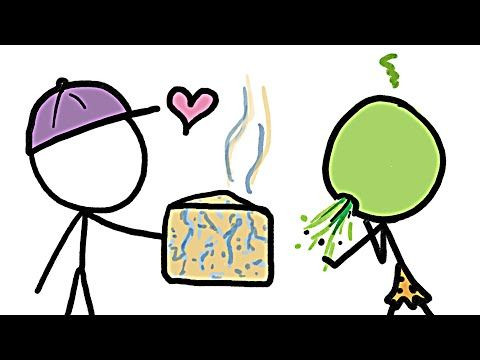The Science Of Fermentation: When Rotten Food Is Actually Good Food

"Rotten" and "spoiled" aren't words typically used to describe delicious food. Yet fermented foods, like sauerkraut, soy sauce, pickles, and prosciutto, are technically rotten. How can rotten food also be considered good food? The team behind MinuteEarth, a YouTube channel devoted to “science and stories about our awesome planet,” breaks it down in their latest video.
Turns out, our favorite foods are home to millions of microbes. In fact, many of the tastes and textures we love are because of tiny bacteria and fungi. Ninety-nine percent of these microbes are harmless to humans; it’s the one percent that is gross enough to influence a natural aversion to anything that might harbor the nasty germs we think of when we think of rotten food.
Take cheese, for example. Blue cheese's strong smell stems from the same bacteria responsible for foot odor. However, “mold spores populate smalls holes and cracks in soon to be blue cheese[…]giving it its smoothness and rich, funky flavor.” This process is known as fermentation.
Fermented foods tend to be the ones people explain will “grow on you.” These foods have been exposed to bacteria and yeasts, resulting in the flavors, textures and smells, that take time to get used to… because they're somewhat spoiled. But rest assured these friendly, fermented microbes are healthy and safe to consume.
In addition to sauerkraut, kefir, kimchi, and kombucha are examples of good, albeit rotten food. Watch MinuteEarth's entire video for more on the process of fermentation — and why it’s necessary for some foods to spoil a little bit.



























